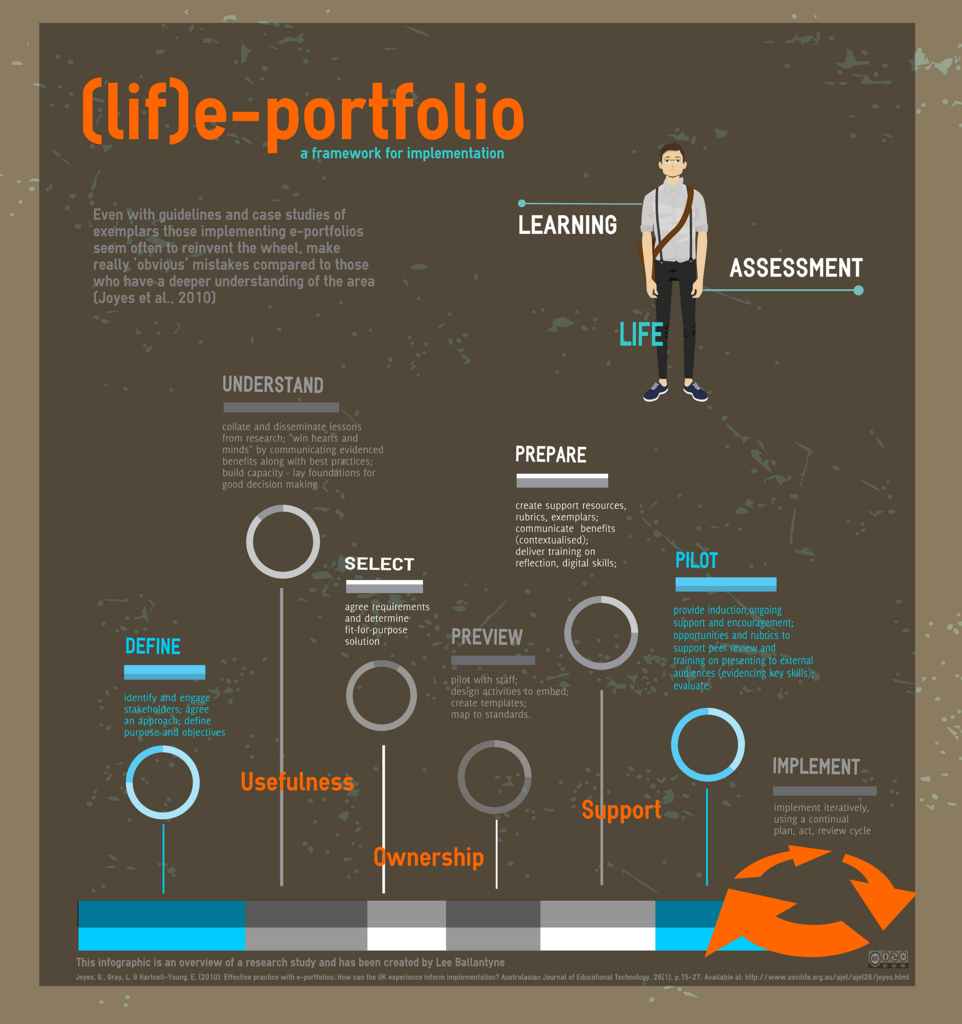Issues in developing and implementing e-Portfolios
Diagramme: @lee74 (some rights reserved) http://www.flickr.com/photos/lee8/7164889790/
One of the issues driving the adoption of technology for learning in organisations – particularly in sectors and occupations such as teaching and the medial sector – is the need to show continuing professional development as a requirement for continuing registration.
Many organisations are looking to some form of e-Portfolio to meet this need. Yet there is a tension between the use of e-portfolios to record and reflect on learning, as a tools for learning itself and as a means to assessment.
A recently published study, (lif)e-Portfolio: a framework for implementation (PDF downlaod) by Lee D Ballantyne, from Cambridge International Examinations (CIE) and University of Cambridge ESOL Examinations (ESOL) , examines some of these issues.
Ballantyne says:
There has been much recent discussion (e.g. Barrett, 2009; JISC, 2012d) concerning the dichotomy of e-portfolios which have the primary purpose of learning versus those which have the primary purpose of assessment. E-portfolio systems developed specifically for assessment purposes often forgo key elements of the learner-centred e-portfolio: social tools, longevity, and personalisation. By contrast, e- portfolios primarily for learning often lack the award-specific structure and reporting tools required for assessment (see Appendix II). A suitable e-portfolio solution must take into consideration the backwash of assessment and that ―from the students‘ point of view assessment always defines the actual curriculum‖ (Ramsden, 1992, p 187), and when the purpose of an e-portfolio changes from a learning tool to summative assessment it becomes ―something that is done to them rather than something they WANT to maintain as a lifelong learning tool‖ (Barrett, 2004a). There is a clear link between an assessment purpose and lack of engagement (Tosh et al., 2005) and yet CIE and ESOL both have stakeholder groups (teachers and trainee teachers) who straddle both learner (professional development) and candidate (teaching awards). The main challenge is to convey the value of the whole e-portfolio to all stakeholders; to find the right balance between assessment-driven (institution-centric) requirements and learner-driven (user-centric) requirements; and to achieve a level of standardisation yet allow for personalisation and creativity (Barrett, 2009). This unprecedented link between teaching, learning and high stakes assessment is fundamentally disruptive: pedagogically, organisationally and technologically (Baume cited Taylor & Gill, 2006, p 4; Cambridge, 2012; Eynon cited Shada et al., 2011. p 75), and planning for successful implementation is critical (JISC, 2012e; Joyes et al., 2010; Meyer & Latham, 2008; Shada at el., 2011).


[…] on http://www.pontydysgu.org Share this:Google +1TwitterFacebookTumblrPinterestLinkedInDiggEmailLike this:LikeBe the first to […]